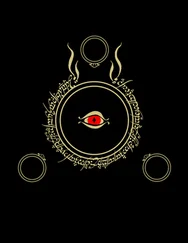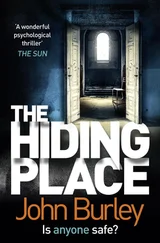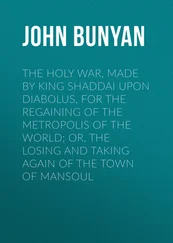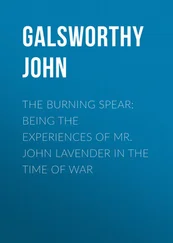Bret pushed himself up into a standing position. His legs held. Nothing seemed to be broken. They’d made it through unscathed. That was good. Still, he felt guilty. He shouldn’t have been going that fast. If she’d been injured, he didn’t know wha—
That was when Cynthia screamed. The stark sound of her cry pierced the silent midday air. It leapt into the woods and came scampering out again like a spooked creature trying to escape. He was so stunned that for a moment he could only stand there, gaping at her. Then his feet were moving, seemingly of their own volition, and he was running toward her as fast as he could through snow cresting his knees.
“ What is it?! ” he called to her, closing the distance. She neither answered nor screamed again—only stood there, body rigid, looking down at the wounded snowmobile. Making his way through the deep drifts was maddeningly slow, and Bret had time to think that he wished she would scream again, just so he would know that she was mentally still with him. A single scream and silence: somehow, that was worse.
“What is it?” he asked again, but by the time he’d completed the sentence he was standing beside her, and he was able to see quite clearly for himself. His girlfriend stared at the snow, at the spot where the nose of the vehicle disappeared beneath the powder, at the thing they had struck that had sent them hurtling through the air in the first place. Thankfully, most of it was still hidden below the surface. The part that was sticking out was enough, though—enough to know what they had found. From beneath the snow, as if awoken suddenly from a deep slumber, a single forearm jutted accusingly toward the sky. The skin was bluish white, only a few shades darker than the surrounding snow, and the appendage ended abruptly at the wrist in a macerated curl of muscle and bone.
They had discovered the third victim.
The young body—as yet unidentified—lay on the metal autopsy table and attempted to tell its story. There was no doubt the boy had been murdered. A long incision began just above the right clavicle and followed a slightly diagonal course across the anterior neck, ending just inferior to the left angle of the mandible. The incision had been deep, severing the internal jugular veins bilaterally, as well as the right carotid artery. Mercifully, the boy would have bled out in less than a minute, and had undoubtedly lost consciousness within the first thirty seconds. Hemorrhaging had been massive, as demonstrated in striking detail in the color photographs of the crime scene police had taken of the uncovered body lying crumpled in the snow amid a shredded carpet of scarlet contrasted on the dove-white backdrop.
Judging from the nature of the wounds and the zealous dismemberment of the body, there was also little doubt that the perpetrator of this crime was the same individual who had attacked the two previous victims. There were several human bite wounds that appeared to have occurred postmortem, and Ben was fairly certain the dental patterns from these wounds would match those sustained by the others. Mutilation of the body seemed to be a strong motivational component for the assailant. In this case, the victim’s facial features had been stripped away using an abrasive surface— something akin to a cheese grater was the first thing that had come to mind. As before, several of the victim’s digits had been amputated. They had either been cast within throwing distance of the body or had been stuffed into various orifices for Ben to discover during autopsy. The left hand, of course, was already accounted for.
The facial mutilation would make it difficult for family, once they were located, to ID the body. Confirmation of the child’s identity would most likely rely on fingerprints and dental records. Based on the anatomy, Ben estimated the victim to be about ten, maybe eleven— not too much older than Joel, he realized with a dull sort of horror.
So far, no one locally had been reported missing over the past few weeks. It was possible the boy was a runaway. According to Detective Schroeder, twenty-three runaways fitting the victim’s general age and gender had been reported missing from a 250-mile radius over the past six months. To Ben, that number seemed high, but when he’d asked Schroeder about it the detective had been nonplussed.
“Lot of kids decide to leave home and strike out on their own. The family environment in many of these cases is”—he shrugged—”less than ideal. Sometimes remaining at home is the more dangerous of their limited options.”
Ben looked through his open office door at the body lying on the table. Detective Hunt stood over it snapping off a few additional photos. “Not in this case,” Ben said.
“No,” Schroeder agreed from where he sat on the other side of the desk. His hair had grayed significantly over the past nine months, Ben noticed, and his eyes appeared to sag a bit more around the edges. The detective tapped his pen lightly on the corner of his notepad, then flipped to a fresh page. “Any idea about the time of death?” he asked.
Ben folded his hands in front of him on the desk. “It’s hard to pinpoint,” he began. “The body was buried in the snow, which causes some minor moisture damage to the superficial tissues but retards the decomposition process.”
Schroeder nodded. “Except for tracks left by the snowmobile and its occupants, the snow cover in the vicinity where the body was located was untouched. There were no surface tracks leading either toward or away from the scene. Which means,” he continued, “the victim wasn’t brought there from someplace else. He was murdered at the spot, presumably before or during the last snowfall, and was simply left there to be buried by the gathering accumulation.”
“From a timing perspective, that coincides with the delivery of the package I received on the front steps of the CO,” Ben said. “That was on the first day of the storm. The hand was cold and virtually bloodless, but no significant decomposition had occurred.”
“Which means that once again,” Carl noted, “he killed this one in broad daylight.” He shook his head. “It’s gutsy of him, I’ll give him that.”
“Maybe there’s a part of him that wants to be caught,” Detective Hunt suggested, entering the office and, with no other chairs available, selecting a spot against the wall behind Ben’s desk on which to lean his thin frame.
Ben turned to him. He had to look back over his left shoulder slightly. “Sorry about the cramped quarters, Detective,” he apologized. “There’re a few stools in the autopsy room, if you’d like to grab one of those.”
Danny waved away the offer. “Don’t worry about it, doc.” He smiled. “Once I make senior detective, the department’s going to give me my own chair to sit on. Chief Garston promised. Until then, I’ve learned to do some of my best thinking standing up.”
“It’s because the blood’s rushing away from your brain,” his partner observed, giving him a flat look. Carl was growing weary of this case. He’d more or less been in a bad mood since it had begun.
“Is that a picture of your family, Dr. Stevenson?” Danny asked, ignoring the insult. He gestured toward a framed photo Ben had sitting on his desk. It had been taken two years ago during a white-water rafting trip in West Virginia. In the posed shot, they stood shoulder to shoulder on a huge rock along the banks of the river, oars hoisted triumphantly over their heads as the water churned and sprayed in the background.
“Yeah,” Ben said, handing him the picture. “We’re a good-lookin’ group, ain’t we?”
Danny smiled. “What river is that?”
Читать дальше
Конец ознакомительного отрывка
Купить книгу












